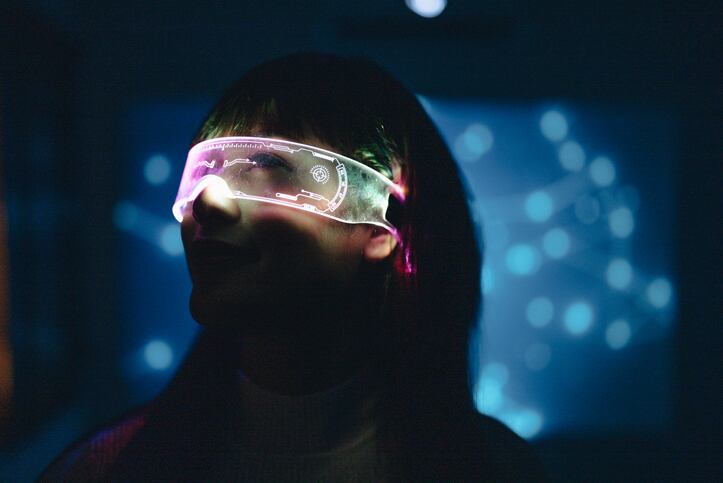At this year’s Cosmoprof Worldwide Bologna, held in April/May, CosmeticsDesign-Europe editor Kacey Culliney moderated a panel discussion with four esteemed speakers – Sylvain Delteil (SVP business development Europe at Perfect Corp), Jane Henderson (chairman of beauty & wellness at Mintel), Robin Raskin (founder of Virtual Events Group), and Valerie Vacante (director of strategy, product experience and innovation at Merkle) – to debate how beauty brands could harness the metaverse.
Whilst ‘The metaverse is here, where are you?’ was the title of the debate, the panelists were unanimous that the metaverse was still at a very early stage in its evolution, given it remained highly fragmented, with much “uncharted territory”.

The metaverse is not yet ‘inter-connected’
Indeed, Valerie Vacante said a more appropriate title for the discussion might have been: “The metaverse is on its way”.
Sylvain Delteil also picked up on this point: “We are at the beginning of something that is huge but very fragmented - everyone is trying their own version and their own vision. We expect that in the coming years, everything will become more integrated so that it provides a more complete experience.”
Robin Raskin agreed: “The metaverse is supposed to be this one large world where you can inter-operate and buy a dress in one metaverse and take it to the next one. Right now, it looks like a set of individual nation states. You’ve got Sandbox, Roblox, Fortnite and companies using Unreal Engine to create their own metaverses, but none of them are inter-connected and they tend to use their own currencies.”
However, Raskin said these different worlds did share commonalities, namely immersiveness and an underlying block chain structure.
For beauty brands looking at how to engage with the metaverse, this fragmentation created difficult decisions about where to concentrate efforts. Vacante’s advice? Focus on the consumer experience. “It’s not about the tech first or about being on a certain platform, brands need to think what is going to be the most important experience for the consumer and then shape a strategy around that,” she said.
Metaverse beauty – start small and stay creative
Raskin, meanwhile, advised starting small. “My advice is don’t bank your entire business fortune on it. Allocate budget to a project that feels right for your brand and get involved,” she said.
And there were several ways for brands to “get involved”, she said, including buying a property in Decentraland, creating a brand’s own metaverse using a gaming platform like Unreal Engine or testing the waters for selling using an NFT marketplace such as OpenSea.
And when beauty brands did jump in, Jane Henderson said creativity would be key.

“I think creativity will be a big part of that success in the metaverse - the way you tell people [things], how you bring them on that journey and how engaged consumers are with your brand,” she said.
The importance of creativity in metaverse campaigns was also highlighted by Vacante, who said the creator economy was predicted to grow by 40% in the next two years.
So, where exactly were the opportunities?
Virtual beauty products and NFTs
Using technology to build virtual try-on capacities to then capture sales of physical products was one of the most oft-cited examples of how beauty brands could utilise the metaverse. However, according to the panelists, there was also an emerging and highly lucrative opportunity for selling virtual products on the metaverse.
“Brands are discovering it is possible to sell something that doesn’t exist. People might want to buy the virtual lipstick they are trying on for their avatar, for example, and in order to sell, you need NFTs, which assure the authenticity of digital goods and enable them to be resold in future,” said Delteil.
Raskin added: “The other thing I would say is that for the beauty and fashion industries, you can actually charge more for a virtual product. A ten-dollar lipstick might cost 40 dollars virtually. It is mind-blowing that people will buy designer sneakers for their avatars.”

The complexity of purchasing NFTs could be a deterrent to some consumers, though, said Henderson.
“In China, one-third of consumers claim to be using crypto currencies. In the West, we are quite far behind,” she said. “We need to look at incentives to help people to take the first steps, otherwise we will have lots of consumers thinking they don’t know how to do it,” she added.
Raskin concurred, recounting her own experience of dealing in digital currency at Decentraland Metaverse Fashion Week: “I wore five items that were free but felt terribly underdressed so had to go out and buy myself wings and halos. It wasn’t easy; I had to set up a digital wallet, buy ethereum and pay various fees.”
Mixing and merging the metaverse and physical retail
Numerous opportunities also still existed for initiatives and campaigns that blended the virtual and real worlds, according to the panelists.
One example cited by Raskin was that of Tommy Hilfiger showcasing its Spring collection at Fashion Week, giving consumers the opportunity to purchase NFTs that could then be redeemed for actual items.
“This approach gives brands a good idea of what they are going to sell without the costs of wastage, reshipping and so on. I think the longtail is that it will help companies plan their seasonal launches,” she said.
There were certainly opportunities for driving efficiencies and cost savings by conducting certain activities within the metaverse, including beyond traditional sales models. Vacante, for example, explained how, together with HeadOffices.space, Merkle had built a virtual showroom for client learning, demonstrating its suite of app-free retail innovations and creating labs for virtual test marketing.
“What we have been able to do with a lot of brands is early pilots. Instead of creating physical mock-ups and putting them in-store, we have created test labs. We are also seeing a lot of traction in using test labs for phantom social testing - there is no investment and brands can obtain very quick feedback,” she explained.

The metaverse also made localisation and globalisation - costly real-world strategies - achievable and affordable in the virtual world, explained Henderson.
“You might not be able to open stores in every US city, but you can do it virtually,” she said.
Brands need to be mindful of gnarly issues
Engagement with the metaverse did, however, raise some contentious issues for brands around sustainability and social responsibility, as the panelists acknowledged.
“In terms of sustainability, the metaverse is a double-edged sword,” said Raskin. “On the pro side, there are a million ways of saving energy by doing things virtually, but the con is that you could probably power Norway for a day on the energy required for a block chain operation. You have to believe that this will get solved.”
And with digital fatigue currently under the spotlight, brands also had to be mindful of wellness and mental health when encouraging consumers to engage with the metaverse, the panelists noted.

Vacante suggested that one platform that could have a role here was Lightship from Niantic, the creators of Pokemon Go. “This empowers companies to create an experience that gets people out and moving,” she said.
She added that it was also about educating brands about how they can play in the metaverse space. “We don’t want people in VR [Virtual Reality] all day either. You don’t have to be in VR or AR [Augmented Reality]. What you have to do is create the right experience for your customer.”
The full webinar is available to watch on-demand HERE.



